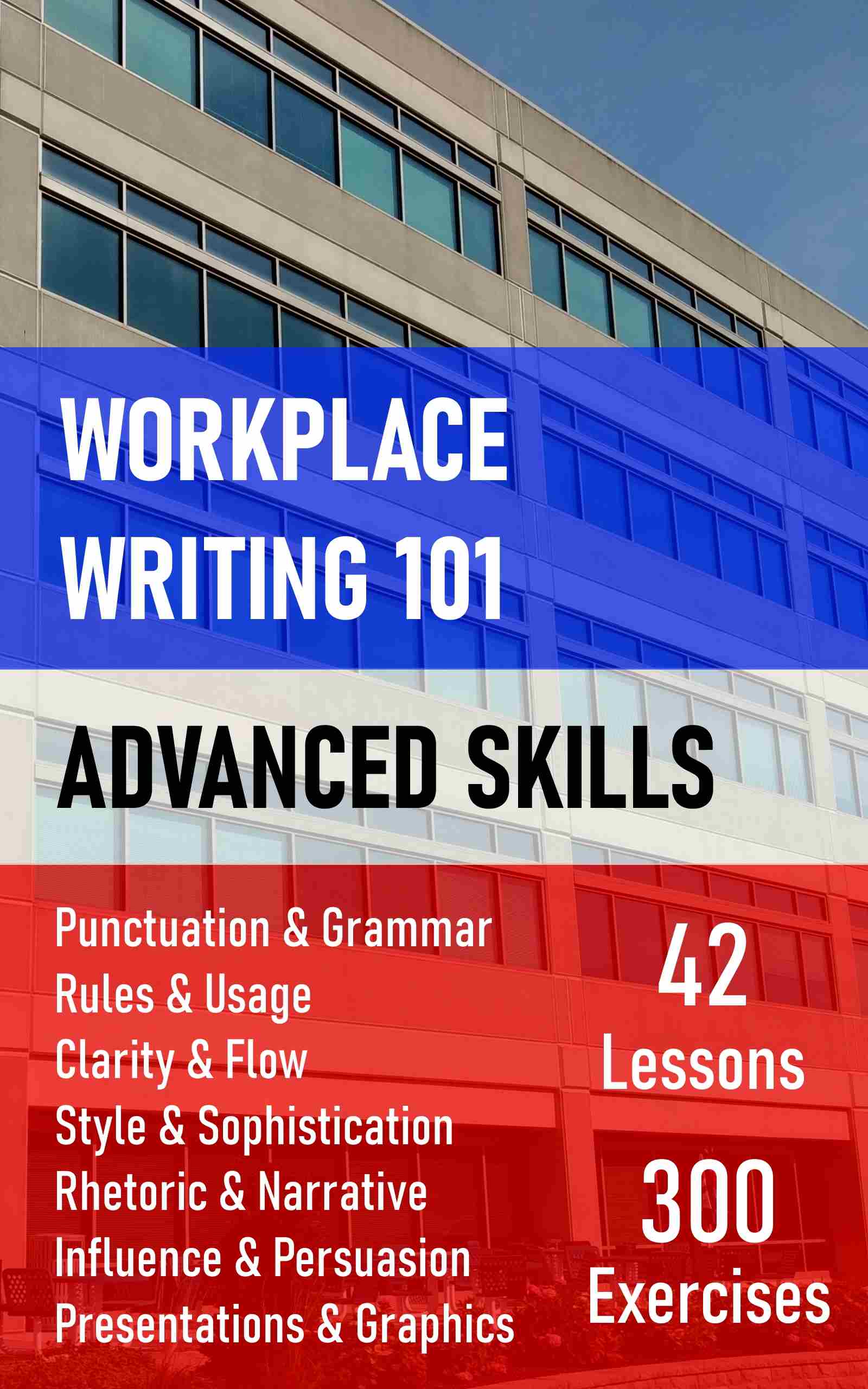masterwritingatwork
Proofread.com

Every writing technique has proper rules as well as preferred nuances. This is about the latter.
Available as an eWorkbook: Kindle . Kobo . Nook
Punctuation & Grammar
Commas - Proper use with initial conjunctions and with long introductions.
Semicolons - Three reasons for use: unity, juxtaposition, and rest.
Dashes - Preferred use of the hyphen, the en dash, and the em dash.
Spelling - Memory aids to hear correct spelling; drills to help remember.
That/Which - Proper use in writing, in terms of scope and purpose.
They Singular - Strategies: play it safe; make it work; own it.
Rules & Usage
Adjective Order - Use of multiple adjectives and a memory aid: NOD-SAShCOMP.
Latin Rules - An explanation for formal style, but common usage overrules.
Just Qualifiers - Taking care when using vague qualifiers.
As/Like - Which word to use when comparing things or actions.
Different/Into/May - Achieving clarity from the precise use of these words.
While/Whether - Avoiding ambiguity by choosing these words with care.
Clarity & Flow
Good Parallelism - The best technique for sequencing parallel structures.
Stuff-to-Back - Why to control content and cadence at the end of sentences.
Bad Delays - Maintaining flow in long sentences by editing interruptions.
Good Modifiers - Things to do when you have too many modifying phrases.
Familiar-to-New - The sentence pattern that pulls the reader along.
Topic Focus - Minimizing topics to improve paragraph coherence.
Style & Sophistication
Tone for Purpose - Strategies for adjusting your style to achieve proper tone.
Personalize - The difference between a conversational style and a personalized style.
Diction - A detailed technique to help choose the right word.
Balance - Between plain and stylish writing, find balance in structure and rhythm.
Inversion - Reasons for reversing the normal order of sentence components.
Humor - Advice about what not to write; techniques for safely being funny.
Rhetoric & Narrative
Engage - Overview of word patterns that engage the reader.
Emphasize - Word patterns that emphasize something for the reader.
Argue - Overview of thought patterns for presenting effective arguments.
Appeal - The strategy of rhetoric: gain trust, show reasons, stir feelings.
Narrative Style - Three things to add to create engaging narrative.
Power of Story - How to structure and use components of story arc.
Influence & Persuasion
Magic Words - Use words to stimulate imagination, activate senses, and create associations.
Personal Reliance - Choose words that match reliance on self or on others.
Approaches to Work - Choose words that match how people approach their work.
Evidence Preference - Choose words that match how readers consider evidence.
Essential Consistency - Understand reciprocal obligation and commitment to consistency.
Ethics at Work - Use a golden rule and two questions.
Presentations & Graphics
Clutter - Simple strategies for reducing clutter on presentation charts.
Focus - For important presentations, focus on questions and be ready with data.
Content - Condensing presentation charts for clarity.
Change - Simple strategies for showing change in graphics.
Contribution - Simple strategies for showing contribution in graphics.
Data - How to show complex data, support it with words, and keep it simple.
masterwritingatwork
Proofread.com